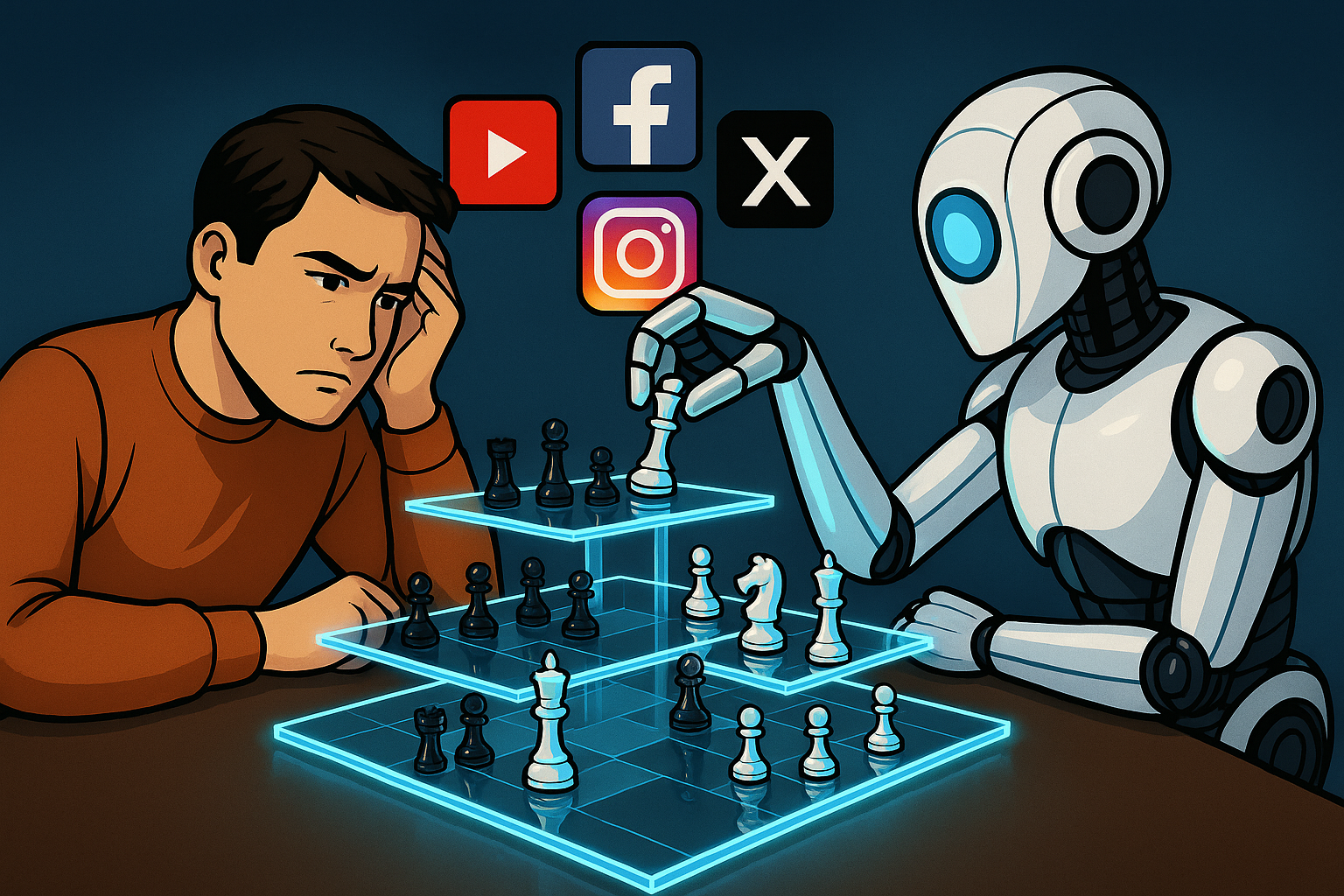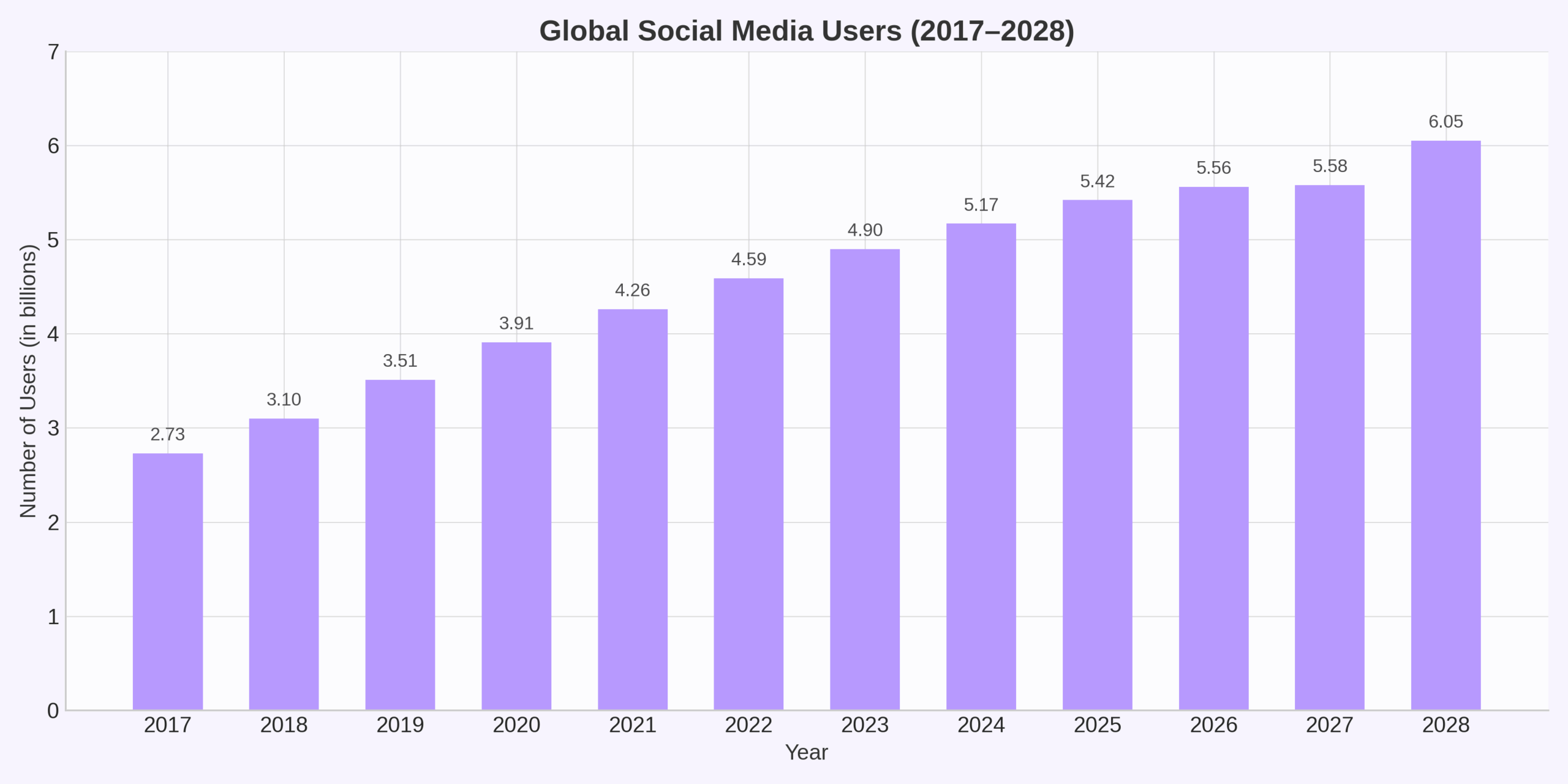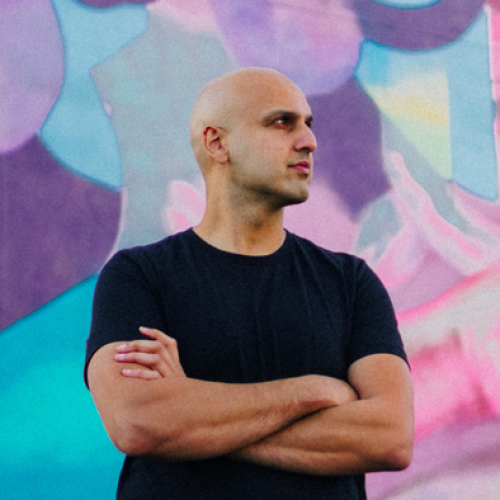Most people think social media is just about going viral or getting more likes and followers. But that’s only the surface.
With over 5.4 billion users worldwide spending an average of 2 hours 24 minutes per day on these platforms, you’re competing in a massive attention marketplace. The real winners are the ones who understand this isn’t about luck, it’s about strategic gameplay.
Once you understand how the game really works, everything starts to click.
Key Takeaways
- Social media is not just a platform. It is a strategic game, and the creators who win are the ones who play with intention.
- The real goals are not followers or likes. They are identity, trust, and leverage. These are the invisible wins that lead to real results.
- Success comes from posting with purpose. When you create with clarity, every piece of content becomes an asset that grows in value over time.
- Obstacles like burnout or low engagement are not signs of failure. They are part of the process and help you grow if you learn from them.
- The most valuable creators focus on long-term equity. They build trust, shape perception, and create opportunities that last beyond any single post.
What Is the Real Goal of Social Media?
Most people use social media for a wide range of reasons. It helps them stay connected with friends and family, discover new communities, access real-time news and information, find entertainment, and explore new brands or products. Whether it is personal or professional, social media gives people a way to connect, express themselves, and stay informed.
But when you step back and look at it from a strategic lens, especially as a creator, founder, or thought leader, the real purpose of social media is not just visibility. It is about building a scalable reputation. One that earns you identity, trust, and leverage in the minds of your audience. These three outcomes are what allow you to shape perception, generate demand, and turn attention into real business results.
Here is what I have seen after working with hundreds of experts, creators, and entrepreneurs:
The ones who actually win are not the ones obsessing over algorithm hacks. They are the ones focused on mastering three invisible goals that most people completely overlook:
Identity (Positioning):
This is about positioning. It is not just who you are, it is who people think you are. The right identity creates instant recognition. It makes people stop scrolling because your presence signals value. People don’t remember generic content, they remember who it came from.
Trust (Resonance):
You can have reach, but without trust, none of it matters. Trust is what makes your content resonate. It is what turns attention into belief and belief into action. It is the difference between someone watching and someone buying.
Leverage (Compounding Attention):
This is when things start to compound. Leverage means one piece of content drives multiple outcomes. A single video leads to inbound opportunities. A podcast sparks speaking gigs. A post attracts high-intent leads. You are no longer chasing momentum, you are creating it.
The influencer marketing industry is now valued at over $20 billion annually, specifically because one influential post can drive outsized ROI. In fact, 22% of marketers say niched influencers provide among the best ROI, second only to Facebook’s vast reach
These three goals don’t show up in your analytics dashboard. But they’re what separate creators who influence culture from those chasing clout.
Once you shift your focus to building identity, trust, and leverage, everything else begins to click. Your reach becomes more targeted. Your engagement becomes more meaningful. And monetization becomes a natural byproduct instead of a constant struggle.
Why Do You Need a Social Media Strategy?
Social media is not just a place to post updates or chase trends. It is a modern attention marketplace where billion of users scrolling, sharing, and consuming content. Whether you are building a personal brand, growing a business, or trying to reach a specific audience, your ability to succeed depends on whether you approach it with strategy or randomness.
Since 2011, I’ve worked alongside top digital marketing minds like Neil Patel, which opened the door to consulting with brands like Salesforce and other high-profile entrepreneurs. At one point, my agency was brought in to guide major corporations on strategy before we even touched execution. That experience taught me something critical: strategy always outperforms tactics, especially when it comes to long-term success on social platforms.
Having a social media strategy gives your efforts structure and direction. It helps you focus on what actually drives results. I’ve used this exact approach with every social media client I work with, from NonToxicDad, who now generates over 50 million monthly views across platforms, to lifestyle icons like Nikki Haskell, who consistently attracts millions of targeted views each month.
The core outcomes are always the same: build brand awareness, earn trust, deepen engagement, and drive measurable business results. Without strategy, your content becomes scattered, your message gets diluted, and your audience eventually tunes out.
A Deloitte survey found companies that excel at social media strategy (called social-first brands) see an average 10.2% annual revenue increase and are eight times more likely to exceed growth expectations by 25% or more . When brands treat social media as more than marketing posts, as a channel to build trust, listen, and engage, they outpace competitors
That is why it helps to think of social media as a game. Just like basketball, football, or chess, every meaningful game has three things in common: goals, moves, and blocks. These are not abstract concepts. They are the foundation that makes any game worth playing.
- In basketball, the goal is the hoop, the moves are passes and shots, and the blocks are the opposing team’s defense.
- In chess, the goal is checkmate, the moves are the calculated steps each piece takes, and the blocks are the strategies of your opponent.
- In football, the goal is the end zone, the moves are every play you execute, and the blocks are the defense pushing back.
Social media is no different. Without goals, your content has no direction. Without moves, you cannot advance. And without blocks, there is no challenge, no growth, and no meaning. If everyone could go viral instantly, virality would lose all value. The difficulty is what makes it worthwhile. Obstacles like low engagement, algorithm shifts, or creative burnout are not signs of failure. They are what give your wins meaning. Just like in any real game, the resistance is what makes progress satisfying.
When all three work together, you stop guessing what to post and start making strategic moves that build momentum, deepen trust, and create long-term impact.
Let’s take a closer look at each one.
1. Goals
Goals give your actions purpose. In basketball, the goal is the hoop. In chess, it’s checkmate. Without a goal, the game has no direction. On social media, the real goal isn’t just more followers or likes. Those are temporary boosts, not meaningful wins. What matters most is becoming known for something specific, building trust with your audience, and creating content that leads to real opportunities.
Creators who focus on building identity, earning trust, and creating leverage are the ones who last. Everyone else burns out chasing attention that doesn’t convert into anything valuable.
2. Moves
Moves are the choices you make in the game. In chess, every piece has a function. In social media, every post is a move. What you say, how you show up, which format you use, it all adds up. The key is to stop reacting and start posting with intention. Your content should reinforce who you are, what you’re about, and the space you want to own in your audience’s mind.
Creators who treat every post as a strategic move build momentum. The ones who post at random usually stay stuck.
3. Blocks
Every good game has resistance. Without challenges, there’s no point in playing. In sports, it’s the opposing team. In chess, it’s the tension of each decision. On social media, your challenges might be algorithm changes, creative burnout, fear of judgment, or low engagement. Creative burnout, for example, is extremely common: 90% of creators have experienced burnout, and 71% have even considered quitting social media. These aren’t signs you’re failing. They’re signs that growth is possible.
When you expect obstacles, you stop getting discouraged by them. You learn to work through them, and that’s when you actually improve.
How Do I Get More Social Media Followers?
That’s the question almost everyone asks when they feel stuck. But it’s often the wrong question.
The truth is, follower count alone doesn’t equal impact. You can have thousands of followers and still feel invisible. Follower count is often a vanity metric. It’s easy to measure but not always meaningful. What really matters is whether people remember you, trust you, and act on what you share.
Most creators who struggle with growth are playing the wrong game. They post inconsistently, chase trends, and obsess over followers, without a clear strategy behind what they’re building. That’s like trying to win a game without knowing the rules.
If you’re only focused on gaining followers, you’ll likely burn out before you ever build real traction. But when you shift your focus to building identity, earning trust, and creating leverage, growth becomes inevitable, and more sustainable.
These three goals are the pillars of long-term social media success:
Identity is the mental space you occupy in someone’s mind. It’s what people associate you with. Think of it as your category. When someone thinks of a topic, do they think of you?
Trust is the speed at which people believe and act on your ideas. It’s not about how many people like you, it’s about how quickly they follow your lead. More than 80% of consumers say trust makes them likelier to buy. So if you’re building trust, you’re building real influence.
Leverage is your ability to create outsized results from small inputs. With enough trust and positioning, a single piece of content can drive sales, fill events, or spark opportunities, without you pushing it.
When you get these three working together, your Name, Image, and Likeness become more than just your personal brand. They become intellectual property. Your intellectual properties are real business assets that carry weight, attract opportunity, and compound in value over time.
I’ve seen this firsthand. One of my clients built over a million followers on Instagram. On the surface, it looked like a massive success. He was landing brand deals and gaining recognition, but it didn’t lead to the kind of sales most people would expect from a seven-figure following. The reason? He didn’t start monetizing until after he hit a million. By then, his audience was already trained to see him as more of a news-style content creator than a trusted expert. And the truth is, most people wouldn’t buy a product recommended by their local news anchor. Without the right positioning early on, the trust needed to drive conversions just wasn’t there.
Meanwhile, I’ve worked with creators who had just 50,000 followers and generated 10x the revenue, because they positioned themselves with authority, built trust early, and trained their audience to take action.
That’s the difference between chasing followers and building a foundation.
The goal isn’t just growth. It’s growth that means something. The kind of growth that leads to loyalty, influence, and long-term results.
What Does Social Media Success Look Like (The ROI of Attention)?
When you’re building something real on social media, the signs of success often look different than what most people expect.
It’s easy to think you’re not doing well if you’re not going viral or gaining hundreds of followers every week. But those aren’t the signals that matter most, not if your goal is long-term influence, income, or opportunity.
Social media success isn’t about follower count—it’s about adopting an ROAC mindset: Return on Attention Created. ROAC is a way of thinking that prioritizes both the quantitative outcomes (leads, sales, traffic) and qualitative assets (trust, authority, brand recognition) your content creates over time. This mindset shifts your focus from vanity metrics to value creation, asking: “What lasting impact is this content having on my business and reputation?” True success happens when you approach each post strategically. Every piece of content has the potential to position you as an expert, generate opportunities, and build equity that continues to grow long after it’s published.
So how do you know if your strategy is actually working?
Here are a few signs to look for:
- People mention your name when your niche comes up
- You get thoughtful DMs or comments that say “this really resonated”
- New clients or collaborators say, “I found you through your instagram, Youtube, etc.”
- Other creators start referencing your ideas, frameworks, or phrases
- Your audience begins to expect and anticipate your posts
- Smaller numbers, but deeper engagement, better leads, and more inbound opportunities
- You won’t always get applause right away. But when you start seeing signs like these, it means you’re doing something more valuable than just chasing reach. You’re building equity in people’s minds. And that’s how long-term success starts.
Play to Build, Not Just to Win
Most people approach social media trying to “win”. To go viral, to get seen, to chase whatever the algorithm rewards next. But that mindset leads to short-term thinking. It keeps creators stuck in a loop of reacting instead of building.
The real game is different. And it rewards a different kind of player.
When you start thinking long-term, you stop chasing followers and start building a reputation. You stop worrying about engagement on a single post and start looking at how your presence compounds over time. You stop measuring your value by how many people saw your content, and start measuring it by how deeply it landed.
Because at the end of the day, the goal isn’t just reach. It’s recognition. It’s trust. It’s leverage.
It’s creating something that makes people remember you, respect your ideas, and act when you show up.
That’s the game that matters. And once you start playing it, you’ll never go back.
Frequently Asked Questions
Q: What does it actually mean to treat social media like a game?
It means understanding that social media has structure. Just like any real game—basketball, chess, or business—it runs on goals, moves, and obstacles. When you recognize the rules, the right moves become clearer. Instead of reacting, you start building something intentional.
Q: What should I focus on if I’m not chasing followers or likes?
Focus on building identity, trust, and leverage. These three outcomes are what drive real business results. They aren’t surface-level metrics, but they determine how people remember you, whether they act on your ideas, and how easily your brand grows over time.
Q: How do I know if my content is working?
If people are referencing your name when your topic comes up, if you’re getting thoughtful comments or DMs, or if opportunities are coming to you without constant effort—that’s a sign your strategy is working. Depth, not just reach, is what tells you you’re on the right track.
Q: What’s the difference between a follower and a real audience?
Followers are a number. A real audience listens, remembers, and responds. You can have a million passive followers and no traction—or 5,000 engaged people who take action every time you speak. It’s not about how many; it’s about who, and what they’re willing to do.
Q: Can I still grow if I post less often?
Yes—if what you post is strategic and consistent with your identity. Growth doesn’t just come from volume. It comes from clarity, positioning, and delivering content that builds trust. One strong piece can create more momentum than ten forgettable ones.
Q: What’s the next step after this?
Once you understand the game, the next move is building structure around how you show up. That means developing repeatable content formats, naming your frameworks, and positioning yourself intentionally. That’s what turns content into intellectual property—and visibility into value.





